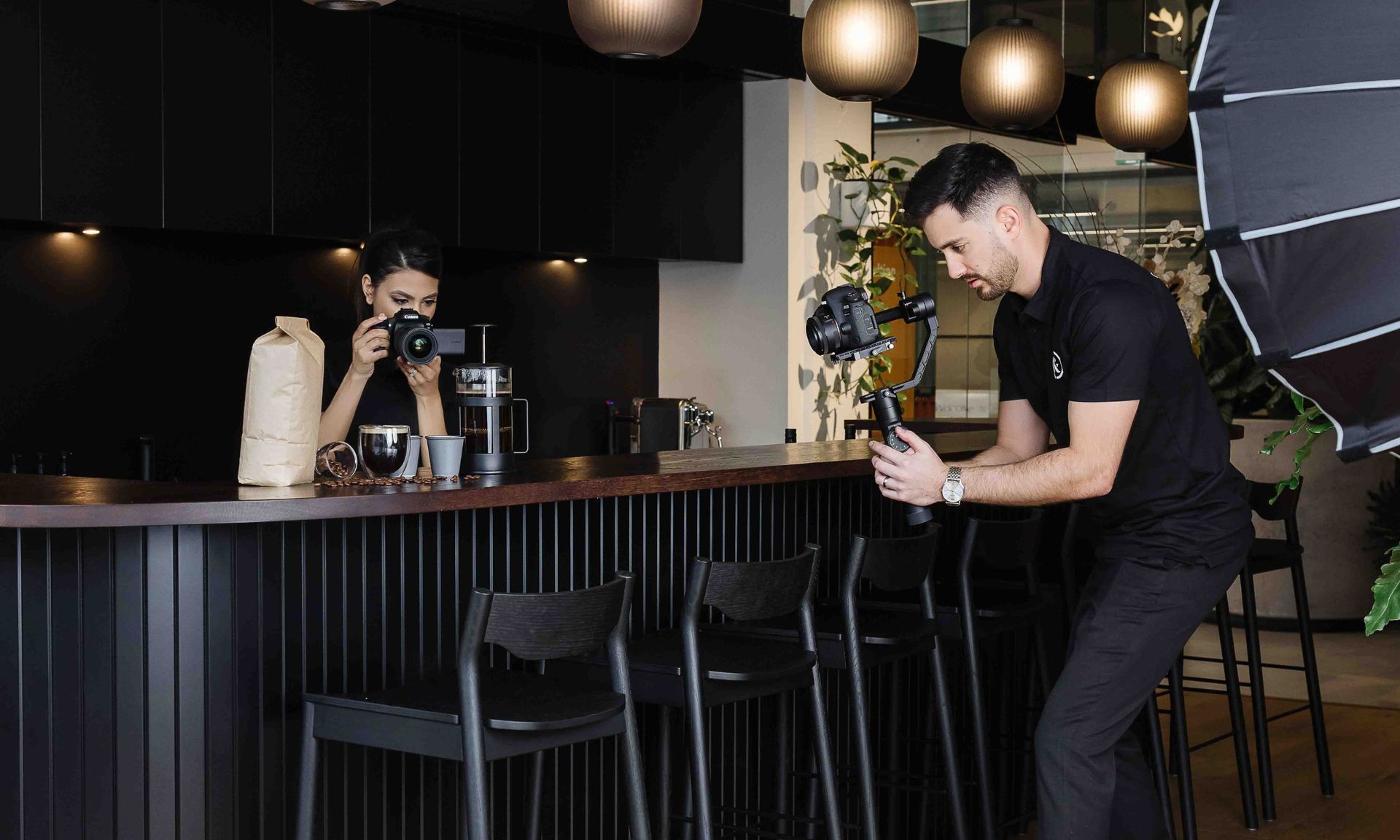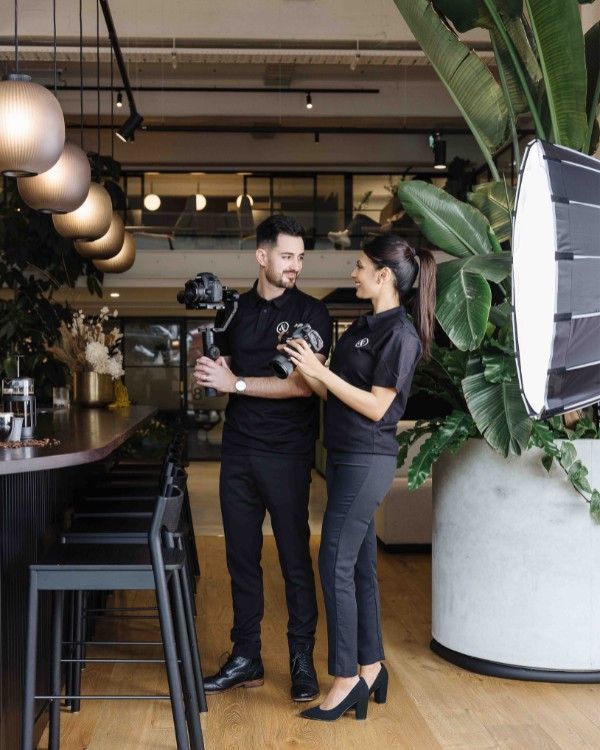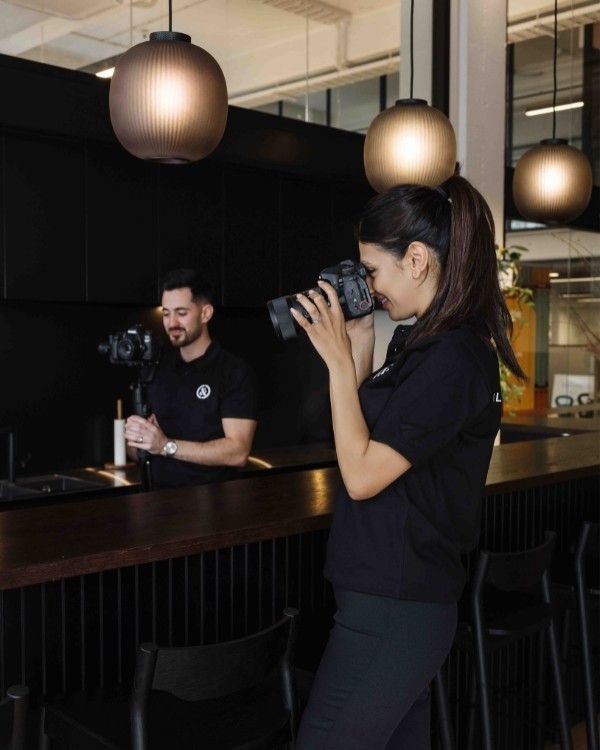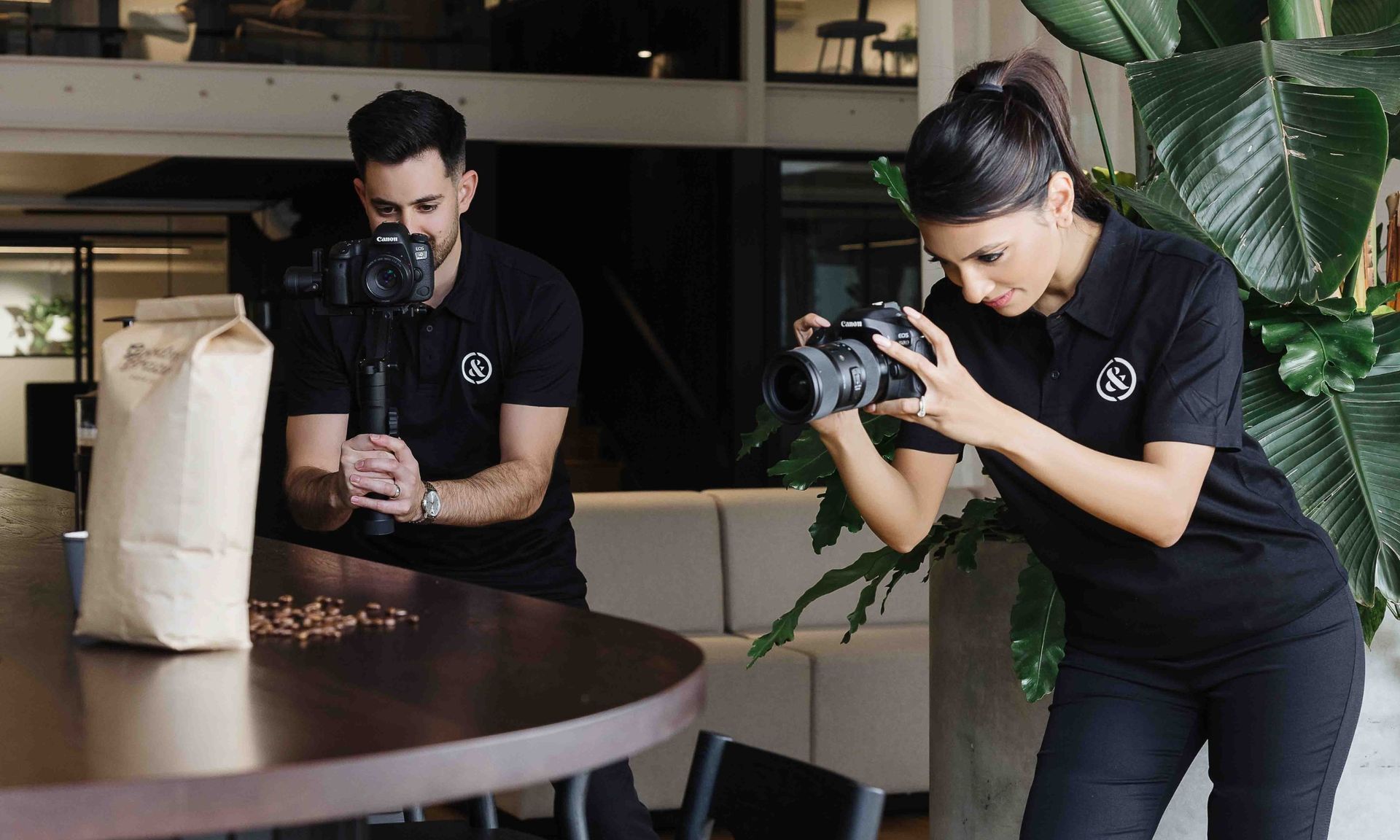The 8 common types of marketing videos for SMBs
The 8 common types of marketing videos for SMBs
Video can be a powerful way for SMBs to connect with their audience, explain what they do, and build trust. It brings your business to life in a way that words and images alone can’t. Whether it’s a walkthrough of your service, a conversation with a happy client, or a quick look inside your team culture, video gives people a chance to see who you really are and why they should choose you.
Not every video needs to tell the whole story. Some are created to educate, others to promote, and some are used to share a behind-the-scenes glimpse that helps your brand feel more human. Choosing the right format at the right time can help you get better results from your content and create a more consistent experience across your marketing.
ARTICLE CONTENTS
What this article will cover
In this article, we’ll explore eight common types of marketing videos that small and medium-sized businesses can use to support their goals - from building brand awareness to converting leads.
Brand story video
Share who you are and what your business stands for.
Product or service demo video
Show how your product or service works.
Customer testimonial video
Let real clients speak to your credibility.
Explainer video
Simplify a concept, process, or offer.
Behind-the-scenes video
Give a genuine look at your people or process.
Educational or how-to video
Teach something useful and build authority.
Event video
Highlight key business events or activations.
Video ad or commercial
Promote your offer with a strong call to action.
1. Brand story video
Every business has a story. A brand story video brings that story to life. Not just what you do, but why you do it. It’s a chance to show the people, values, and mission behind your business in a way that feels real and relatable (NZ Film Commission, 2024).
This type of video is especially useful for building emotional connection and trust with your audience. For service-based SMBs, where reputation plays a big role in the decision-making process, it can be a powerful way to stand out from competitors who only talk about features or pricing.
You might use your brand story video on your homepage, about page, social channels, or in email campaigns. It gives people a reason to care about your business - helping them understand who you are, what matters to you, and why your work is worth their attention.
Here is an example of a brand story video produced by Clarke & Clarke:
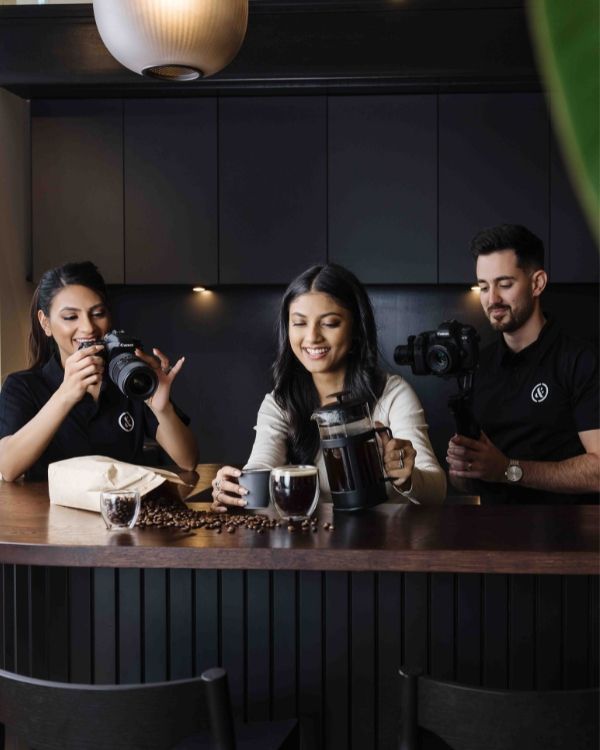
2. Product or service demo video
Sometimes the easiest way to explain your offer is to show it in action. A demo video gives potential customers a clear understanding of how your product or service works and the benefits it delivers - without needing them to read through pages of content.
For SMBs, especially those offering specialised or technical services, this type of video can bridge the gap between interest and enquiry. It builds clarity and confidence by showing real results, real usage, or a real experience of what it’s like to work with you.
Demo videos work well on product or service pages, landing pages, and in follow-up emails to leads. They’re also useful in social media ads where a quick, visual explanation can capture attention and encourage clicks.
The key is to focus on what matters most to your audience - solve a problem, answer a common question, or highlight a feature that sets your business apart.
3. Customer testimonial video
Trust matters - especially when someone’s deciding whether to work with your business. A customer testimonial video allows your satisfied clients to speak for you, sharing their experience in their own words. It’s one of the most effective ways to build credibility and reassure potential customers that you deliver on your promises.
Unlike written testimonials, video adds a human layer. Viewers can see real people, hear their tone, and connect with the authenticity of the message. This makes testimonials particularly useful for high-trust industries like trades, healthcare, or professional services, where personal experience often drives decision-making.
These videos are often used on service pages, in case studies, or as part of paid social campaigns. They can also be sent in sales follow-ups to reinforce the value of what you offer.
When done well, a testimonial video doesn’t just validate your brand. It shows prospective clients what’s possible when they choose to work with you.
Here is an example of a customer testimonial video produced by Clarke & Clarke:

4. Explainer video
Explainer videos are designed to make things easier to understand. Whether you’re breaking down a complex service, introducing a new concept, or walking through a process step by step, this format helps simplify information in a way that’s engaging and easy to follow.
They’re especially useful for businesses offering services that aren’t immediately straightforward - think financial advice, software tools, or multi-step offerings. Rather than overwhelm your audience with text, an explainer video keeps things visual, structured, and to the point.
Here’s where explainer videos shine:
- Top of funnel content for website visitors who are just starting to explore your service
- Social media and email marketing: where attention spans are short
- Sales and onboarding: to clarify how something works before or after purchase
These videos are often animated or supported by clear visuals, but they don’t need to be complex. The goal is to answer common questions, reduce friction, and help your audience feel more informed and confident.
5. Behind-the-scenes (BTS) video
Behind-the-scenes videos give people a look at the real people and processes behind your business. Whether it’s your team on-site, a glimpse into how something is made, or a moment from your day-to-day operations, this type of content builds trust by showing your brand in a more personal, down-to-earth way.
For SMBs, especially those in service-based industries, BTS content helps remove the ‘faceless brand’ feeling. It makes your business feel approachable and real - something people can connect with on a human level.
These videos often feel more casual and spontaneous, which is exactly what makes them effective. You might capture team members setting up for a job, preparing an order, or simply chatting about their role. On social media, this kind of content performs well because it feels honest and unpolished - the opposite of a sales pitch.
If you're looking to strengthen brand connection and showcase the people behind the name, a behind-the-scenes video is a great place to start.

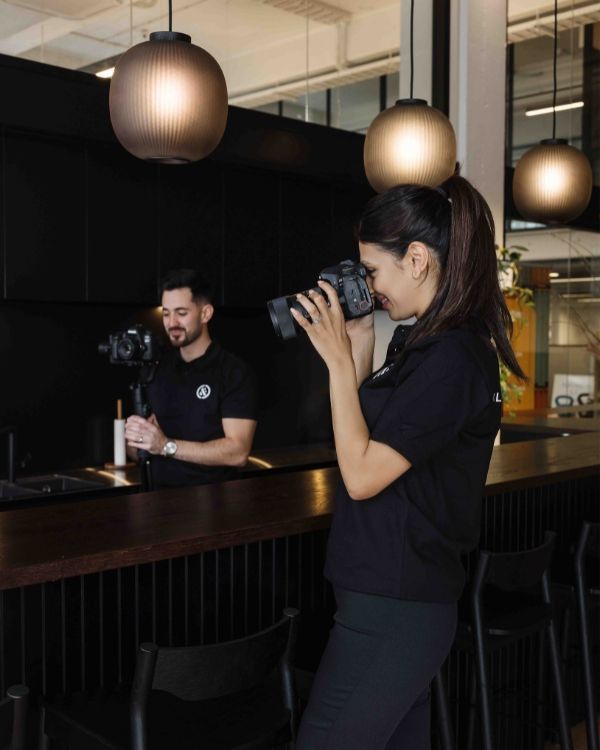
6. Educational / how-to video
Educational and how-to videos are a great way for SMBs to teach their audience something useful. Whether you’re showing how a service works, sharing expert tips, or explaining a common challenge, this format allows you to deliver value upfront while positioning your business as a trusted expert.
These videos work well as part of a wider content strategy, especially if your audience is searching for answers online. By sharing knowledge freely, you build familiarity and trust with potential customers who may not be ready to enquire yet but will remember your brand when they are (Think with Google, 2024).
How-to videos are great for blog pages, SEO landing pages, and social media. They also add value to lead magnets or nurture emails, especially when your goal is to educate before you convert.
Choose topics that are clear, relevant, and specific to your audience’s needs. Keep the video concise and easy to follow, focusing on one idea at a time. The goal isn’t to impress, it’s to be genuinely helpful.
7. Event video
Event videos capture key moments from your business, whether it’s a product launch, open day, activation, or something behind the scenes at a community event. They’re a great way to show energy, brand personality, and real-world engagement with your audience.
For SMBs, this format can help build visibility and connection. Even if someone couldn’t attend in person, an event video lets them experience the highlights and get a sense of what your business is like in action. It can also serve as valuable content long after the event ends.
These videos work well across social media, email newsletters, and even follow-up campaigns. They’re especially effective when paired with music, captions, or short sound bites that make the content easy to engage with - even on mute.
When done well, a testimonial video doesn’t just validate your brand. It shows prospective clients what’s possible when they choose to work with you.
Here is an example of Clarke & Clarke using this format for a MINI event campaign:

8. Video ad / commercial
Video ads are short, punchy, and designed to drive action. Whether it’s a Facebook ad promoting a limited-time offer, a YouTube pre-roll with a clear message, or an Instagram reel that grabs attention in the first few seconds, this format is built for conversion.
For SMBs, video ads are a powerful way to reach new audiences, retarget website visitors, or highlight a specific product or service. They work best as part of a paid campaign strategy where creative needs to stand out quickly and deliver a clear result
The strongest video ads focus on one message. They feature eye-catching visuals, engaging copy, and a strong call to action. This could be booking a call, downloading a resource, or making a purchase.
When done well, a testimonial video doesn’t just validate your brand. It shows prospective clients what’s possible when they choose to work with you.
Conclusion
There’s no one-size-fits-all approach to video marketing. The best results come from choosing the right format for the right moment, whether that’s telling your brand story, showing a service in action, or sharing a customer success. Each of the eight video types we’ve covered plays a different role in helping your audience understand, trust, and take action with your business.
You don’t need to create everything at once. Start with what will have the most impact based on your goals, then build out a library of content that works across your website, social media, email, and paid ads.
If you’re ready to make video a more strategic part of your marketing, we can help.
Clarke & Clarke works with businesses to plan, produce, and promote videos that support growth.
Frequently asked questions
Have questions about using video in your marketing? Here are a few common ones we hear from SMBs looking to get started.
What type of video should I start with?
It depends on your marketing goals. If you want to build trust, start with a brand story or testimonial video. If your audience needs clarity on what you offer, a service demo or explainer is a strong place to begin.
Do I need a professional videographer for these?
It depends on the video type. Brand stories, ads, and testimonials benefit from professional production, while behind-the-scenes or how-to videos can often be filmed in-house with guidance.
Where should I share my videos?
Read moreYou can use them across your website, social media, email campaigns, and paid ads. Choose platforms based on the video’s purpose and where your audience is most active.
How do I know if my marketing video is working?
Track metrics like views, watch time, clicks, and enquiries. What success looks like will depend on the goal of the video. Whether it’s reach, engagement, or conversion.
What’s the difference between a video ad and a brand video?
A video ad is designed for paid promotion and quick action, often with a strong CTA. A brand video focuses more on connection and trust by sharing your story and values.






